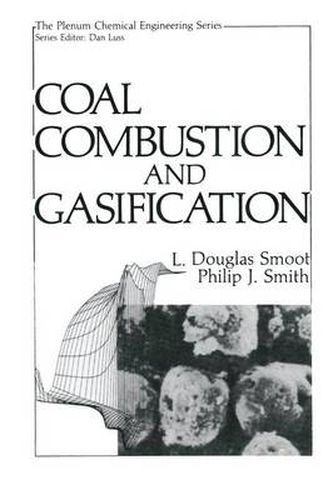Readings Newsletter
Become a Readings Member to make your shopping experience even easier.
Sign in or sign up for free!
You’re not far away from qualifying for FREE standard shipping within Australia
You’ve qualified for FREE standard shipping within Australia
The cart is loading…






This title is printed to order. This book may have been self-published. If so, we cannot guarantee the quality of the content. In the main most books will have gone through the editing process however some may not. We therefore suggest that you be aware of this before ordering this book. If in doubt check either the author or publisher’s details as we are unable to accept any returns unless they are faulty. Please contact us if you have any questions.
The use of coal is required to help satisfy the world’s energy needs. Yet coal is a difficult fossil fuel to consume efficiently and cleanly. We believe that its clean and efficient use can be increased through improved technology based on a thorough understanding of fundamental physical and chemical processes that occur during consumption. The principal objective of this book is to provide a current summary of this technology. The past technology for describing and analyzing coal furnaces and combus tors has relied largely on empirical inputs for the complex flow and chemical reactions that occur while more formally treating the heat-transfer effects. GrOWing concern over control of combustion-generated air pollutants revealed a lack of understanding of the relevant fundamental physical and chemical mechanisms. Recent technical advances in computer speed and storage capacity, and in numerical prediction of recirculating turbulent flows, two-phase flows, and flows with chemical reaction have opened new opportunities for describing and modeling such complex combustion systems in greater detail. We believe that most of the requisite component models to permit a more fundamental description of coal combustion processes are available. At the same time there is worldwide interest in the use of coal, and progress in modeling of coal reaction processes has been steady.
$9.00 standard shipping within Australia
FREE standard shipping within Australia for orders over $100.00
Express & International shipping calculated at checkout
This title is printed to order. This book may have been self-published. If so, we cannot guarantee the quality of the content. In the main most books will have gone through the editing process however some may not. We therefore suggest that you be aware of this before ordering this book. If in doubt check either the author or publisher’s details as we are unable to accept any returns unless they are faulty. Please contact us if you have any questions.
The use of coal is required to help satisfy the world’s energy needs. Yet coal is a difficult fossil fuel to consume efficiently and cleanly. We believe that its clean and efficient use can be increased through improved technology based on a thorough understanding of fundamental physical and chemical processes that occur during consumption. The principal objective of this book is to provide a current summary of this technology. The past technology for describing and analyzing coal furnaces and combus tors has relied largely on empirical inputs for the complex flow and chemical reactions that occur while more formally treating the heat-transfer effects. GrOWing concern over control of combustion-generated air pollutants revealed a lack of understanding of the relevant fundamental physical and chemical mechanisms. Recent technical advances in computer speed and storage capacity, and in numerical prediction of recirculating turbulent flows, two-phase flows, and flows with chemical reaction have opened new opportunities for describing and modeling such complex combustion systems in greater detail. We believe that most of the requisite component models to permit a more fundamental description of coal combustion processes are available. At the same time there is worldwide interest in the use of coal, and progress in modeling of coal reaction processes has been steady.